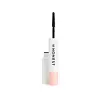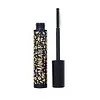What's inside
What's inside
 Key Ingredients
Key Ingredients

 Benefits
Benefits

 Concerns
Concerns

 Ingredients Side-by-side
Ingredients Side-by-side

Water
Skin ConditioningBeeswax
Emulsion StabilisingPotassium Cetyl Phosphate
EmulsifyingGlycerin
HumectantGlyceryl Stearate Se
EmulsifyingCopernicia Cerifera Wax
Castor Isostearate Beeswax Succinate
Skin ConditioningAcacia Senegal Gum
MaskingCellulose
AbsorbentGlyceryl Behenate
EmollientJojoba Esters
EmollientTocopherol
AntioxidantEthylhexylglycerin
Skin ConditioningCaprylyl Glycol
EmollientCetyl Palmitate
EmollientSorbitan Olivate
EmulsifyingSorbitan Palmitate
EmulsifyingXanthan Gum
EmulsifyingCaprylic/Capric Glycerides
EmollientSodium Benzoate
MaskingCellulose Gum
Emulsion StabilisingPotassium Sorbate
PreservativeSodium Phytate
Phosphoric Acid
BufferingCI 77499
Cosmetic ColorantGlyceryl Stearate
EmollientZea Mays Starch
AbsorbentCetearyl Alcohol
EmollientWater, Beeswax, Potassium Cetyl Phosphate, Glycerin, Glyceryl Stearate Se, Copernicia Cerifera Wax, Castor Isostearate Beeswax Succinate, Acacia Senegal Gum, Cellulose, Glyceryl Behenate, Jojoba Esters, Tocopherol, Ethylhexylglycerin, Caprylyl Glycol, Cetyl Palmitate, Sorbitan Olivate, Sorbitan Palmitate, Xanthan Gum, Caprylic/Capric Glycerides, Sodium Benzoate, Cellulose Gum, Potassium Sorbate, Sodium Phytate, Phosphoric Acid, CI 77499, Glyceryl Stearate, Zea Mays Starch, Cetearyl Alcohol
Water
Skin ConditioningBeeswax
Emulsion StabilisingJojoba Esters
EmollientCopernicia Cerifera Wax
Glycerin
HumectantStearic Acid
CleansingPalmitic Acid
EmollientStearyl Stearate
EmollientStearyl Palmitate
EmulsifyingAminomethyl Propanediol
BufferingAcacia Senegal Gum
MaskingCetyl Palmitate
EmollientParaffin
PerfumingCetyl Stearate
EmollientCaprylyl Glycol
EmollientHydroxyethylcellulose
Emulsion StabilisingPhenoxyethanol
PreservativeBehenic Acid
CleansingMicrocrystalline Wax
Emulsion StabilisingDisodium Phosphate
BufferingPolysorbate 60
EmulsifyingTocopherol
AntioxidantSodium Phosphate
BufferingCI 77499
Cosmetic ColorantWater, Beeswax, Jojoba Esters, Copernicia Cerifera Wax, Glycerin, Stearic Acid, Palmitic Acid, Stearyl Stearate, Stearyl Palmitate, Aminomethyl Propanediol, Acacia Senegal Gum, Cetyl Palmitate, Paraffin, Cetyl Stearate, Caprylyl Glycol, Hydroxyethylcellulose, Phenoxyethanol, Behenic Acid, Microcrystalline Wax, Disodium Phosphate, Polysorbate 60, Tocopherol, Sodium Phosphate, CI 77499
 Reviews
Reviews

Ingredients Explained
These ingredients are found in both products.
Ingredients higher up in an ingredient list are typically present in a larger amount.
Acacia Senegal Gum has skin soothing, thickening, and formulation stabilizing properties. It comes from the Acacia tree that is native to sub-Saharan Africa.
Beeswax is natural wax produced by honey bees and can be synthetically created. It consists mainly of fatty acid esters and long-chain alcohols.
In cosmetics, beeswax is a emollient. Due to its waxy structure, it creates a protective barrier. This barrier prevents water from evaporating off the skin.
This may not be a good ingredient for oily skin. We recommend speaking with a professional if you have concerns.
Beeswax cannot be removed with water, but can be taken off with an oil cleanser.
Beeswax is also antiseptic and contains vitamin A.
Learn more about BeeswaxCaprylyl Glycol is a humectant and emollient, meaning it attracts and preserves moisture.
It is a common ingredient in many products, especially those designed to hydrate skin. The primary benefits are retaining moisture, skin softening, and promoting a healthy skin barrier.
Though Caprylyl Glycol is an alcohol derived from fatty acids, it is not the kind that can dry out skin.
This ingredient is also used as a preservative to extend the life of products. It has slight antimicrobial properties.
Learn more about Caprylyl GlycolCetyl Palmitate is a wax-like substance.
It comes from palmitic acid and palmityl alcohol. Cetyl Palmitate may not be safe for Malassezia folliculitis, or fungal-acne.
This ingredient is naturally found in the guava fruit and stony corals.
Learn more about Cetyl PalmitateCi 77499 is also hydrated iron III oxide. It is created from mixing red and black iron oxides. This helps give shades of darkness to a product.
Iron III oxides are classified as inorganic chemicals for coloring.
Copernicia Cerifera Wax comes from a palm tree native to Brazil; another name for this ingredient is Carnauba Wax.
This ingredient is used to thicken texture and also leaves behind a film when applied.
Fun fact: This wax has the highest melting point of all natural waxes and low solubility.
Learn more about Copernicia Cerifera WaxGlycerin is already naturally found in your skin. It helps moisturize and protect your skin.
A study from 2016 found glycerin to be more effective as a humectant than AHAs and hyaluronic acid.
As a humectant, it helps the skin stay hydrated by pulling moisture to your skin. The low molecular weight of glycerin allows it to pull moisture into the deeper layers of your skin.
Hydrated skin improves your skin barrier; Your skin barrier helps protect against irritants and bacteria.
Glycerin has also been found to have antimicrobial and antiviral properties. Due to these properties, glycerin is often used in wound and burn treatments.
In cosmetics, glycerin is usually derived from plants such as soybean or palm. However, it can also be sourced from animals, such as tallow or animal fat.
This ingredient is organic, colorless, odorless, and non-toxic.
Glycerin is the name for this ingredient in American English. British English uses Glycerol/Glycerine.
Learn more about GlycerinJojoba Esters is a wax created from Jojoba oil. It is an emollient and film-forming ingredient. In bead form, it is an exfoliator.
This ingredient has high oxidative stability, meaning it doesn't break down when exposed to oxygen.
Its similarity to our skin's natural oils makes it a great emollient. Emollients help soften and soothe our skin by creating a barrier on top. This barrier helps trap moisture in, keeping skin hydrated.
It is created using either the hydrogenation or transesterification processes on jojoba oil.
Learn more about Jojoba EstersTocopherol (also known as Vitamin E) is a common antioxidant used to help protect the skin from free-radicals and strengthen the skin barrier. It's also fat soluble - this means our skin is great at absorbing it.
Vitamin E also helps keep your natural skin lipids healthy. Your lipid skin barrier naturally consists of lipids, ceramides, and fatty acids. Vitamin E offers extra protection for your skin’s lipid barrier, keeping your skin healthy and nourished.
Another benefit is a bit of UV protection. Vitamin E helps reduce the damage caused by UVB rays. (It should not replace your sunscreen). Combining it with Vitamin C can decrease sunburned cells and hyperpigmentation after UV exposure.
You might have noticed Vitamin E + C often paired together. This is because it is great at stabilizing Vitamin C. Using the two together helps increase the effectiveness of both ingredients.
There are often claims that Vitamin E can reduce/prevent scarring, but these claims haven't been confirmed by scientific research.
Learn more about TocopherolWater. It's the most common cosmetic ingredient of all. You'll usually see it at the top of ingredient lists, meaning that it makes up the largest part of the product.
So why is it so popular? Water most often acts as a solvent - this means that it helps dissolve other ingredients into the formulation.
You'll also recognize water as that liquid we all need to stay alive. If you see this, drink a glass of water. Stay hydrated!
Learn more about Water